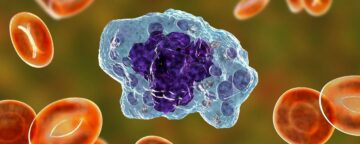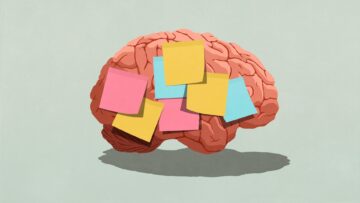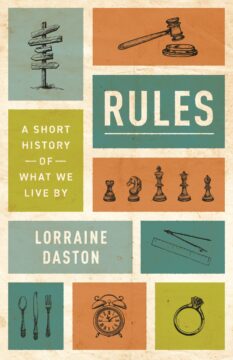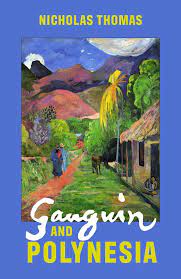Category: Recommended Reading
The Silencing of Ophelia
Robert Crossley at the Hudson Review:
 People are constantly telling Ophelia what to do. No sooner has Laertes left the room, with an injunction to remember his words to her, than Polonius, never one to mind his own business, asks Ophelia what her exchange with her brother was all about. The conversation between father and daughter that follows is squirm-worthy. The more Ophelia tries to explain how things stand between her and Hamlet—how he has behaved in courting her and how she has responded to the “many tenders / Of his affection to me”—the more her father belittles her. “You speak like a green girl”; “think yourself a baby”; “Tender yourself more dearly”; “Go to, go to.” Each time Ophelia tries to speak up for herself—and, for that matter, speak up for Hamlet—Polonius overrides her. Finally, in his last twenty lines, he stifles her effort at reasoning with him, adding a father’s authority to the brother’s condescension: “I would not, in plain terms, from this time forth / Have you so slander any moment leisure / As to give words or talk with the Lord Hamlet. / Look to’t, I charge you. Come your ways.” By the scene’s end any resistance left in Ophelia has wilted. Not for the last time she is silenced. “I shall obey, my lord.”
People are constantly telling Ophelia what to do. No sooner has Laertes left the room, with an injunction to remember his words to her, than Polonius, never one to mind his own business, asks Ophelia what her exchange with her brother was all about. The conversation between father and daughter that follows is squirm-worthy. The more Ophelia tries to explain how things stand between her and Hamlet—how he has behaved in courting her and how she has responded to the “many tenders / Of his affection to me”—the more her father belittles her. “You speak like a green girl”; “think yourself a baby”; “Tender yourself more dearly”; “Go to, go to.” Each time Ophelia tries to speak up for herself—and, for that matter, speak up for Hamlet—Polonius overrides her. Finally, in his last twenty lines, he stifles her effort at reasoning with him, adding a father’s authority to the brother’s condescension: “I would not, in plain terms, from this time forth / Have you so slander any moment leisure / As to give words or talk with the Lord Hamlet. / Look to’t, I charge you. Come your ways.” By the scene’s end any resistance left in Ophelia has wilted. Not for the last time she is silenced. “I shall obey, my lord.”
more here.
The Institute For Illegal Images
Erik Davis at The Paris Review:
The Institute of Illegal Images (III) is housed in a dilapidated shotgun Victorian in San Francisco’s Mission District, which also happens to be the home of a gentleman named Mark McCloud. The shades are always drawn; the stairs are rotting; the door is peppered with stickers declaring various subcultural affiliations: “Acid Baby Jesus,” “Haight Street Art Center,” “I’m Still Voting for Zappa.” As in many buildings from that era, at least in this city, the first floor parlor has high ceilings, whose walls are packed salon-style with the core holdings of the institute: a few hundred mounted and framed examples of LSD blotter.
The III maintains the largest and most extensive collection of such paper products in the world, along with thousands of pieces of the materials—illustration boards, photostats, perforation boards—used to create them. Gazing at these crowded walls, the visitor is confronted with a riot of icons and designs, many drawn from art history, pop media, and the countercultural unconscious, here crammed together according to the horror vacui that drives so much psychedelic art. There are flying saucers, clowns, gryphons, superheroes, cartoon characters, Escher prints, landscapes, op art swirls, magic sigils, Japanese crests, and wallpaper patterns, often in multiple color variations.
more here.
Macrophages on the Fast Track to Tumor Defense
Laura Tran in The Scientist:
 Macrophages serve as the Swiss army knives of the innate immune system, switching between phenotypes to perform different functions in response to the surrounding environment. One of their key attributes is their mobility to sites of inflammation, infection, and tumors. This trait garnered the attention of researchers who developed therapies to leverage macrophages’ abilities.1 There are three different macrophage types, naïve (M0), antitumor (M1), and protumor (M2). M1 macrophages accumulate at the tumor and exert antitumor activity. Researchers have attempted to use them in adoptive cell therapies, but these cell therapies are in their early stages with limited clinical success.2 One aspect that may influence treatment efficacy is how the macrophages traffic to the tumor. For now, the dynamics of macrophage movement are poorly understood.
Macrophages serve as the Swiss army knives of the innate immune system, switching between phenotypes to perform different functions in response to the surrounding environment. One of their key attributes is their mobility to sites of inflammation, infection, and tumors. This trait garnered the attention of researchers who developed therapies to leverage macrophages’ abilities.1 There are three different macrophage types, naïve (M0), antitumor (M1), and protumor (M2). M1 macrophages accumulate at the tumor and exert antitumor activity. Researchers have attempted to use them in adoptive cell therapies, but these cell therapies are in their early stages with limited clinical success.2 One aspect that may influence treatment efficacy is how the macrophages traffic to the tumor. For now, the dynamics of macrophage movement are poorly understood.
Samir Mitragotri, a bioengineer at Harvard University, wondered, “If we look at the transport properties of activated M1 macrophages and the naïve M0 macrophages, is there a difference?” Upon investigation, Mitragotri and his team elucidated how macrophage phenotype alters its efficiency in tumor infiltration. Their findings, published in Applied Physics Reviews, offer insights into how macrophage dynamics may influence cell therapy development.3
More here.
The Desire to Be Visible
Matene Toure in The Baffler:
 AFTER THE NAKBA OF 1948 and the violent implementation of an Israeli state in historic Palestine, the revolution looked to cinema. The portrayal of Palestine in cinema goes back to the creation of cinema itself, in 1896; the creation of sound cinema posed a grave threat to burgeoning Zionist activities. Organizations like the Jewish National Fund and Histadrut (General Federation of Laborers) rounded up major financial and political support to back film productions that expanded the propaganda apparatus locally and abroad. As a consequence, as Ella Shohat notes in Israeli Cinema: East/West and the Politics of Representation, “very few narrative features were produced until the early sixties, while documentary practice in Palestine became virtually a synonym for Zionist propaganda films.” Dominant visual regimes were oriented toward legitimizing modern Zionism in the eyes of the West and socializing new settlers internally, often using cinematic devices such as Americans playing Israeli soldiers (Paul Newman in Exodus) or the exotic Arab women-victim trope (Dina Doron in Clouds Over Israel) making these movies little more than vessels for paternalist, revisionist narratives and the advancement of Israeli nation-building.
AFTER THE NAKBA OF 1948 and the violent implementation of an Israeli state in historic Palestine, the revolution looked to cinema. The portrayal of Palestine in cinema goes back to the creation of cinema itself, in 1896; the creation of sound cinema posed a grave threat to burgeoning Zionist activities. Organizations like the Jewish National Fund and Histadrut (General Federation of Laborers) rounded up major financial and political support to back film productions that expanded the propaganda apparatus locally and abroad. As a consequence, as Ella Shohat notes in Israeli Cinema: East/West and the Politics of Representation, “very few narrative features were produced until the early sixties, while documentary practice in Palestine became virtually a synonym for Zionist propaganda films.” Dominant visual regimes were oriented toward legitimizing modern Zionism in the eyes of the West and socializing new settlers internally, often using cinematic devices such as Americans playing Israeli soldiers (Paul Newman in Exodus) or the exotic Arab women-victim trope (Dina Doron in Clouds Over Israel) making these movies little more than vessels for paternalist, revisionist narratives and the advancement of Israeli nation-building.
In 1968, Palestinian cinema reemerged as part of the liberation movement, which believed in the power of film to cultivate solidarity in the Arab region and internationally. Recently restored by the Film Foundation’s World Cinema Project, The Dupes (1972), directed by the Egyptian filmmaker Tewfik Saleh, resurfaces in the aftermath of the Hamas attacks of October 7 and Israel’s ongoing genocide in Gaza. At the time of its release, the film was one of the first narrative Arab films to confront the Zionist cinematic propaganda machine by centering the tragic history of the Nakba, or or “catastrophe,” which had been purposely omitted from Israeli cinema. As Edward Said writes, “The whole history of the Palestinian struggle has to do with the desire to be visible.”
More here.
Tuesday Poem
Resurrection of the Wild
The country where he lives
is haunted
by the ghost of an old forest.
In the cleared fields
where he gardens
and pastures his horses
it stood once,
and will return. There will be
a resurrection of the wild.
Already it stands in wait
at the pasture fences.
It is rising up
in the waste places of the cities.
When the fools of the capitals
have devoured each other
in righteousness,
and the machines have eaten
the rest of us, then
there will be the second coming
of the trees. They will come
straggling over the fences
slowly, but soon enough.
The highways will sound
with the feet of the wild herds,
returning. Beaver will ascend
the streams as the trees
close over them.
The wolf and the panther
will find their old ways
through the nights. Water
and air will flow clear.
Certain calamities
will have passed,
and certain pleasures.
The wind will do without
corners. How difficult
to think of it: miles and miles
and no window.
by Wendell Berry
from Poetic Outlaws
Sunday, March 3, 2024
Nabokov and why the moral act is the free act
Dana Dragunoiu at the IAI:
 Forced into exile in 1917 by the October Revolution, Nabokov had good reasons to champion freedom as passionately and consistently as he did. From his point of view and that of most Russian émigrés, the Bolsheviks substituted the tsarist tyranny with a tyranny of their own. For Nabokov in particular, this was especially painful because his father had been one of the “liberationists” who dedicated his life to transforming Russia into a modern liberal-democratic state. His father’s political activism and his murder in a bungled political assassination by far-right extremists is one of the most poignant chapters of Nabokov’s biography. Nabokov’s philosophically complex account of freedom is a consistent seam throughout his major works – and it has also led to confusion in their popular and critical reception.
Forced into exile in 1917 by the October Revolution, Nabokov had good reasons to champion freedom as passionately and consistently as he did. From his point of view and that of most Russian émigrés, the Bolsheviks substituted the tsarist tyranny with a tyranny of their own. For Nabokov in particular, this was especially painful because his father had been one of the “liberationists” who dedicated his life to transforming Russia into a modern liberal-democratic state. His father’s political activism and his murder in a bungled political assassination by far-right extremists is one of the most poignant chapters of Nabokov’s biography. Nabokov’s philosophically complex account of freedom is a consistent seam throughout his major works – and it has also led to confusion in their popular and critical reception.
More here.
The Mysteries and Quirks of Human Memory
Erica Goode in Undark:
 “The problem isn’t your memory, it’s that we have the wrong expectations for what memory is for in the first place,” Ranganath writes in his introduction, a theme that he returns to throughout the book. “Severe memory loss is undoubtedly debilitating, but our most typical complaints and worries around everyday forgetting are largely driven by deeply rooted misconceptions.”
“The problem isn’t your memory, it’s that we have the wrong expectations for what memory is for in the first place,” Ranganath writes in his introduction, a theme that he returns to throughout the book. “Severe memory loss is undoubtedly debilitating, but our most typical complaints and worries around everyday forgetting are largely driven by deeply rooted misconceptions.”
Those misguided notions include the idea that memory is an archival repository of our life stories; that memories are fixed and unchangeable, and perhaps most of all, that our memories can always be trusted, when in fact they are eminently corruptible.
What scientists know about how memory works has increased significantly over the last decades. Ranganath early on introduces readers to a basic distinction between episodic memory, the ability to recall life events and experiences — where you were going and what you were feeling the day you left your wallet sitting on a bench in Central Park, for example — and semantic memory, the ability to recall factual information, like how many justices sit on the Supreme Court.
More here.
Inventing Hindu supremacy
Mihir Dalal in Aeon:
 To understand Narendra Modi’s India, it is instructive to grasp the ideas of the Hindu Right’s greatest ideologue, the world of British colonial India in which they emerged, and the historical feebleness of the present regime.
To understand Narendra Modi’s India, it is instructive to grasp the ideas of the Hindu Right’s greatest ideologue, the world of British colonial India in which they emerged, and the historical feebleness of the present regime.
Vinayak Damodar Savarkar was a polymath who read law in London, enjoyed Shakespeare, admired the Bible, wrote important historical works, and became an accomplished poet and playwright. His lifelong obsession was politics.
Savarkar took up political activity in his teens and became a cherished anti-British revolutionary. While serving a long prison sentence for inciting violence against the British, he transformed into a Hindu supremacist bent on dominating Indian Muslims.
More here.
Critique of Pure Mindlessness
Nicholas Heron in the Sydney Review of Books:
 In the 1969 postscript to The Structure of Scientific Revolutions, Thomas Kuhn distinguished two different senses in which ‘paradigm’, the technical term his book popularised, had been used. On the one hand, a paradigm denoted the ‘entire constellation of beliefs, values, techniques, and so on shared by the members of a given community’. In this first sense, paradigm was employed sociologically, an application Kuhn regretted in retrospect. ‘Disciplinary matrix’ became his preferred locution for the shared commitments defining a specific scientific community.
In the 1969 postscript to The Structure of Scientific Revolutions, Thomas Kuhn distinguished two different senses in which ‘paradigm’, the technical term his book popularised, had been used. On the one hand, a paradigm denoted the ‘entire constellation of beliefs, values, techniques, and so on shared by the members of a given community’. In this first sense, paradigm was employed sociologically, an application Kuhn regretted in retrospect. ‘Disciplinary matrix’ became his preferred locution for the shared commitments defining a specific scientific community.
On the other hand (and in a stricter sense), paradigm denoted only one element in that constellation: a model or an example that could ‘replace explicit rules as a basis for the solution of the remaining puzzles of normal science’. In this second, ‘deeper’ understanding of the term, paradigms were equated with the concrete problem-solutions (the example Kuhn gives is Newton’s Second Law of Motion, typically written f = ma) enshrined in a scientific community’s textbooks, lectures and laboratory exercises that scientists learned to apply in their research.
More here.
Sunday Poem
Let This Darkness be a Belltower
Quiet friend who has come so far,
feel how your breathing makes
more space around you.
Let this darkness be a bell tower
and you the bell. As you ring,
what batters you becomes your strength.
Move back and forth into the change.
What is it like, such intensity of pain?
If the drink is bitter, turn yourself to wine.
In this uncontainable night,
be the mystery at the crossroads of your senses,
the meaning discovered there.
And if the world has ceased to hear you,
say to the silent earth: I flow.
To the rushing water, speak: I am
by Rainer Maria Rilke
from Poetic Outlaws
The Power of Regret
Geoffrey Engelstein in Nautilus:
 One of the primary motivators of human behavior is avoiding regret. Before the legendary behavioral economists Daniel Kahneman and Amos Tversky formalized prospect theory and loss aversion, they believed that regret avoidance was at the root of the human behaviors they were studying. However, they learned that there are behaviors that regret avoidance could not explain and were led to a broader picture.
One of the primary motivators of human behavior is avoiding regret. Before the legendary behavioral economists Daniel Kahneman and Amos Tversky formalized prospect theory and loss aversion, they believed that regret avoidance was at the root of the human behaviors they were studying. However, they learned that there are behaviors that regret avoidance could not explain and were led to a broader picture.
Let’s take a look at a simple game that sheds a bit more light on the psychology of regret.
I have two dice—one red, one white—and two identical cups. I secretly place one die under each cup (no trickery), mix them up, and ask you to select the cup with the red die. You did not see me put the dice under the cups, so you have absolutely no information on which to base your decision. If you make the right choice, I give you $5. If not, you gain nothing.
Go ahead and select one of the cups. Let’s say you pick the cup on the right. I slide it toward you but don’t let you look underneath.
I then ask you if you want to switch to the cup on the left, to change your choice.
Would you switch? The majority of people do not; about 90 percent do not switch, according to studies. Personally, I do this experiment with my class and at other presentations, and I have yet to have someone switch when offered the opportunity.
Why is that? The odds of being right are 50-50, so why not switch?
More here.
The Trouble with “Heart of Darkness”
David Denby in The New Yorker:
 Who here comes from a savage race?” Professor James Shapiro shouted at his students.
Who here comes from a savage race?” Professor James Shapiro shouted at his students.
“We all come from Africa,” said the one African-American in the class, whom I’ll call Henry, calmly referring to the supposition among most anthropologists that human life originated in sub-Saharan Africa. What Henry was saying was that there are no racial hierarchies among peoples—that we’re all “savages.”
Shapiro smiled. It was not, I thought, exactly the answer he had been looking for, but it was a good answer. Then he was off again. “Are you natural?” he roared at a girl sitting near his end of the seminar table. “What are the constraints for you? What are the rivets? Why are you here getting civilized, reading Lit Hum?”
It was the end of the academic year, and the mood had grown agitated, burdened, portentous. In short, we were reading Joseph Conrad, the final author in Columbia’s Literature Humanities (or Lit Hum) course, one of the two famous “great books” courses that have long been required of all Columbia College undergraduates. Both Lit Hum and the other course, Contemporary Civilization, are devoted to the much ridiculed “narrative” of Western culture, the list of classics, which, in the case of Lit Hum, begins with Homer and ends, chronologically speaking, with Virginia Woolf. I was spending the year reading the same books and sitting in on the Lit Hum classes, which were taught entirely in sections; there were no lectures. At the end of the year, the individual instructors were allotted a week for a free choice. Some teachers chose works by Dostoyevsky or Mann or Gide or Borges. Shapiro, a Shakespeare scholar from the Department of English and Comparative Literature (his book “Shakespeare and the Jews” will be published by Columbia University Press in January), chose Conrad.
More here.
Pankaj Udhas (1951 – 2024) Ghazal And Playback Singer
Günter Brus (1938 – 2024) Artist, Viennese Actionist
Iris Apfel (1921 – 2024) Style Maven, Fashion Designer
Saturday, March 2, 2024
The End of the Future
Steve Fraser in Jacobin:
Judy Wright, a thirty-year veteran autoworker working at Ford’s River Rouge plant and a member of Local 660 of the United Auto Workers (UAW), was on strike in the fall of 2023. In a PBS Newshour report on September 21, she explained why. “Everything the UAW is asking for is literally what we had before.”
She was right. Most of what the union fought for and won had been lost in one way or another over the previous forty years. Wages to begin with, as well as retirement benefits and the right to strike at local plants, had been serially sacrificed to keep the Big Three auto companies in business and eventually flush with profits. And this is not to mention the precipitous decline in the standard of living of young, new workers, compelled by contract to enter the industry at a lower “tier” carrying severely reduced wages and benefits and with little chance of moving up.
Victory was sweet, hailed by everyone, even the president of the United States. Credit belonged, first of all, to the strategic brilliance of the union’s leadership, which conducted a rolling series of “Stand-Up” strikes simultaneously at all three car makers (an audacious move never before attempted by the union). It effectively pitted the automakers against each other. But this in turn depended on the collective resilience and solidarity of the workers themselves — people like Judy Wright.
Less tangible but potent in its own way was a shift in public sympathies. Underway for some time, people were increasingly appalled by gross inequalities in income and wealth as well as by corporate arrogance and malfeasance. Majorities thought unionizing was a good idea. So the atmospherics favored the strike.
Triumph was punctuated with a certain pathos, however. All this effort — risky, self-sacrificing, heroic — was expended just to claw back what had been lost.
More here.
No Accident: On Two New Books About the Occupied Territories
David N. Myers in the LARB:
ON A COLD February morning in 2012, marked by driving rain and high winds, a terrible collision occurred on a road outside Jerusalem. The accident was caused by an irresponsible and undertrained semitrailer truck driver with 25 prior traffic violations who lost control of his vehicle, which flipped over and swung into a bus carrying school-age children. The crash produced a huge conflagration that would consume the bus, leaving many children burned and six of them dead, along with a teacher.
It is this tragic event that stands at the center of Nathan Thrall’s book A Day in the Life of Abed Salama: Anatomy of a Jerusalem Tragedy (2023), which is based on an extraordinary article in The New York Review of Books in 2021. And it offers a whole microcosmic world of Palestinians (and a few Israelis)—the list of characters at the beginning of the book numbers more than 60—whose lives intersected on that bitter morning in February. Thrall meticulously reconstructs their worlds, exposing readers to deep class and family differences, rivalries between clans and towns, painfully unrequited love, conventional and unconventional gender roles, and, above all, searing tragedy.
More here.
The Shoah after Gaza
Pankaj Mishra in the LRB:
In 1977, a year before he killed himself, the Austrian writer Jean Améry came across press reports of systematic torture against Arab prisoners in Israeli prisons. Arrested in Belgium in 1943 while distributing anti-Nazi pamphlets, Améry himself had been brutally tortured by the Gestapo, and then deported to Auschwitz. He managed to survive, but could never look at his torments as things of the past. He insisted that those who are tortured remain tortured, and that their trauma is irrevocable. Like many survivors of Nazi death camps, Améry came to feel an ‘existential connection’ to Israel in the 1960s. He obsessively attacked left-wing critics of the Jewish state as ‘thoughtless and unscrupulous’, and may have been one of the first to make the claim, habitually amplified now by Israel’s leaders and supporters, that virulent antisemites disguise themselves as virtuous anti-imperialists and anti-Zionists. Yet the ‘admittedly sketchy’ reports of torture in Israeli prisons prompted Améry to consider the limits of his solidarity with the Jewish state. In one of the last essays he published, he wrote: ‘I urgently call on all Jews who want to be human beings to join me in the radical condemnation of systematic torture. Where barbarism begins, even existential commitments must end.’
Améry was particularly disturbed by the apotheosis in 1977 of Menachem Begin as Israel’s prime minister. Begin, who organised the 1946 bombing of the King David Hotel in Jerusalem in which 91 people were killed, was the first of the frank exponents of Jewish supremacism who continue to rule Israel. He was also the first routinely to invoke Hitler and the Holocaust and the Bible while assaulting Arabs and building settlements in the Occupied Territories. In its early years the state of Israel had an ambivalent relationship with the Shoah and its victims.
More here.
Gauguin and Polynesia
Michael Prodger at Literary Review:
 Today, says Thomas, ‘it feels difficult just to look at a Gauguin painting, without being told what to think’. The instructions tell us that he was ‘a sexual predator in life and a colonialist in his art’. Thomas’s aim is not to launder Gauguin’s reputation or undo recent decades of feminist art history and postcolonial studies but to eliminate some of the anachronism that inevitably arises when the past is examined, and judged, by contemporary mores.
Today, says Thomas, ‘it feels difficult just to look at a Gauguin painting, without being told what to think’. The instructions tell us that he was ‘a sexual predator in life and a colonialist in his art’. Thomas’s aim is not to launder Gauguin’s reputation or undo recent decades of feminist art history and postcolonial studies but to eliminate some of the anachronism that inevitably arises when the past is examined, and judged, by contemporary mores.
There is no doubt that Gauguin was a deeply flawed individual. He was, says Thomas, ‘narcissistic … arrogant, brusque and often socially inept’ and a man who ‘never stopped concocting plans to live cheaply, make art, promote it and win renown and reward’. ‘“Gaugin” has become a negative icon,’ he writes, ‘less a body of work or a life, more a sign for a combination of artistic genius, colonial appropriation and sexual abuse.’ But Thomas believes he was more than this.
more here.
